On the sign:
[Side 1]
JUBILEE WALKWAY
The Jubilee Walkway, developed and administered by a speciel Trust, was established to commemorate the Silver Jubilee of Her Majesty Queen Elizabeth II in 1977. It encircles the centre of London, embracing many historic buildings and views. It is approximately 22.4 kms (14 miles) in length. For map suppliers see www.jubileewalkway.com.
Follow the Walkway on foot around London, using the circular Jubilee Walkway discs embedded in the ground. The pavement discs along the Jubilee Walkaway are normally silver, but the discs near this spot are gilt as a special feature to record that Her Majesty Queen Elizabeth II visited this section of the Walkway during her Golden Jubilee Year.
This panel has been supported by The Corporation of London and The Mercers’ Company
The Corporation of London has a diverse range of roles and responsibilities in the City, London and beyond. Through the Court of Common Council it provides local government services for the City, from development control to trading standards, making the City a cleaner, safer, more attractive place in which to live, work, run a business or to visit.
Incorporated by Royal Charter in 1394, the Mercers’ Company is the premier Livery Company of the City of London. The Company owns and manages a large portfolio of investments. Many of these are properties in the City and West End of London. The surplus from the Company operations is distributed to charitable trusts, also administered by the Company. The administration of charitable giving is the Company’s most important function. Over many centuries members of the Company, and other benefactors, have left money in trust for the Company to add for charitable purposes.
[Side 2]
[Illustration and explanation of important buildings in the area]
[Logo of the Jubilee Walkway]
The Iron Duke
The Duke of Wellington is best known as the commander of the forces which defeated Napoleon at the battle of Waterloo in 1815. This statue, by Sir Francis Chantry, was cast from cannons captured from the french in that battle and was erected in 1844.
Mansion House
Designed by George Dance the Elder, Mansion House is one of the grandest surviving Georgian town palaces in London, with magnificent interiors contaonimg elaborate plasterwork and carved timber ornament. Mansion House is a purpose-built home for the lord Mayor of London. Since it was first occupied in 1752 it has provided not only living and working space for the lord Mayor and his household, but also space for large ceremonial entertainments and banquets.
Number 1 Poultry
This building was designed by Sir James Stirling and completed in 1998. It was commissioned by Lord Palumbo, who wanted to create a work of outstanding modern architecture in the City. The site was formerly occupied by a series of historic Edwardian buildings including that of Mappin and Webb.
Bank Headquarters
This building was completed in 1932 as Westminster Bank, it was designed by Sir Edwin Cooper.
Bank of England
The Bank of England is the central bank of the United Kingdom. Sometimes known as "The Old Lady of Threadneedle Street", the Bank was established on this site in 1734. From 1788, the building was extended based on designs by Sir John Soane, culminating in the encirclement of the site with a windowless wall in 1828. This wall forms the perimeter of the building today.
[Side 3]
The Heart of the City
This panel stands in the heart of the City of London near some of the most important financial and civic buildings in the capital. This is the part of London where over 350,000 people work by day, while there are a mere 5,000 residents by night. It was the heart of the original Roman settlement built on the north side of the Thames and later the centre of the medieval walled City of London, where men of wealth and power gradually organised themselves into guilds and companies.
Close to this panel is the Royal Exchange, which contains a new retail development, Mansion House, the official home of the Lord Mayor of London during his year in office, and the Bank of England, founded in 1604 as a private company and now exercising the functions of a state bank.
This is an important intersection in the Jubilee Walkway. The original route was extended from the Tower of London, via King William Street, passing St Paul’s Cathedral on the south side and eventually reaching Leicester Square. In addition to the main walkway circuit, one can also branch off at this point to walk the Barbican Loop which proceeds up to the Barbican and back past the Museum of London, rejoining the Walkway at the north side of St Paul’s Cathedral.
A map of the Jubilee Walkway can be seen on the opposite face of this panel
[Side 4]
[Illustration and explanation of important buildings in the area]
[Logo of the Jubilee Walkway]
Royal Exchange
The Royal Exchange was originally founded by Sir Thomas Gresham in 1566 and has twice been destroyed by fire...
Bank of England
The Bank of England is the central bank of the United Kingdom. Sometimes known as "The Old Lady of Threadneedle Street", the Bank was established on this site in 1734. From 1788, the building was extended based on designs by Sir John Soane, culminating in the encirclement of the site with a windowless wall in 1828. This wall forms the perimeter of the building today.
London Stock Exchange
The origin of the Stock Exchange dates back to the 17th Century whan a group of brokers decided to set up their own premises on the corner of Threadneedle Street and Sweetings Alley. By the beginning of the 19th Century, larger premises were needed and in 1802 a start was made in building a new Stock Exchange on a triangular site between Threadneedle Street, Throgmorton Street and Old Broad Street. In 1972 Her Majesty the Queen opened the Exchange’s current 26-storey office with by 2100 sqm (23.000 sq ft) trading floor.
Tower 42 (formally Natwest Tower)
Designed by Richard Selfert and built in 1979, Tower 42 is a landmark of International recognition and the tallest building in the City of London. At 180m (600 ft) above pavement level, the restaurant on the building’s forty-second storey enjoys unparalleled views over London.
First World War Memorial
Aston Webb’s memorial to the London troops who fell in the Great War.

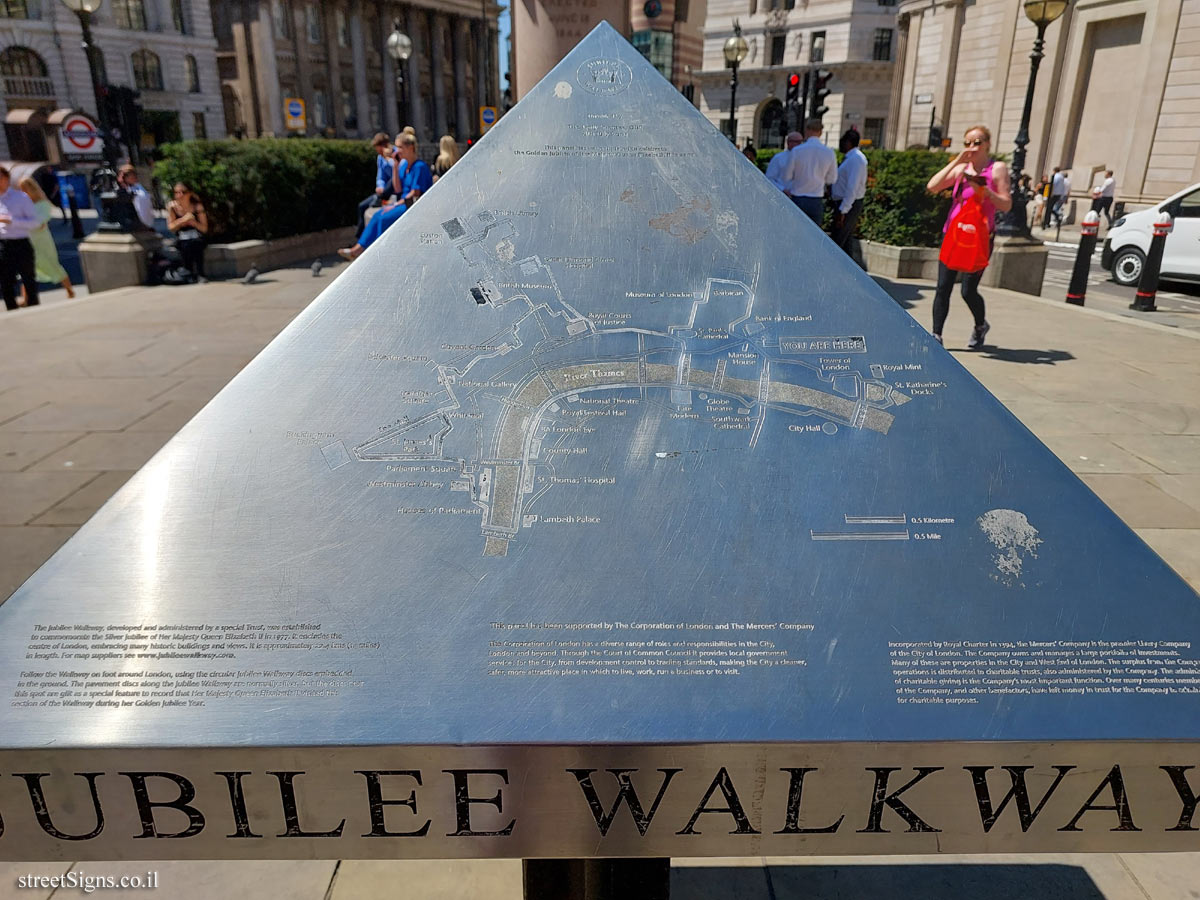 Click for a larger image
Click for a larger image 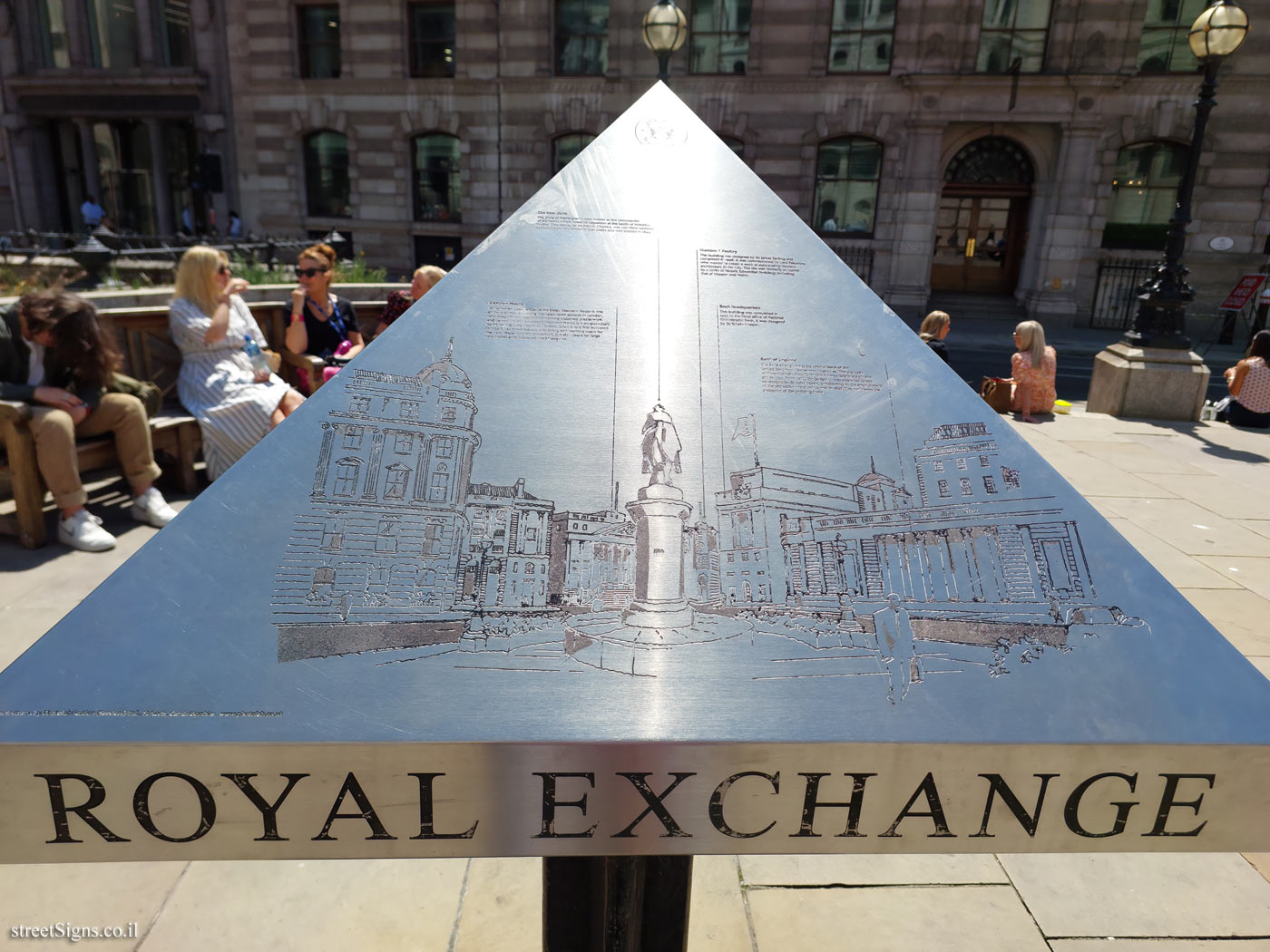 Click for a larger image
Click for a larger image 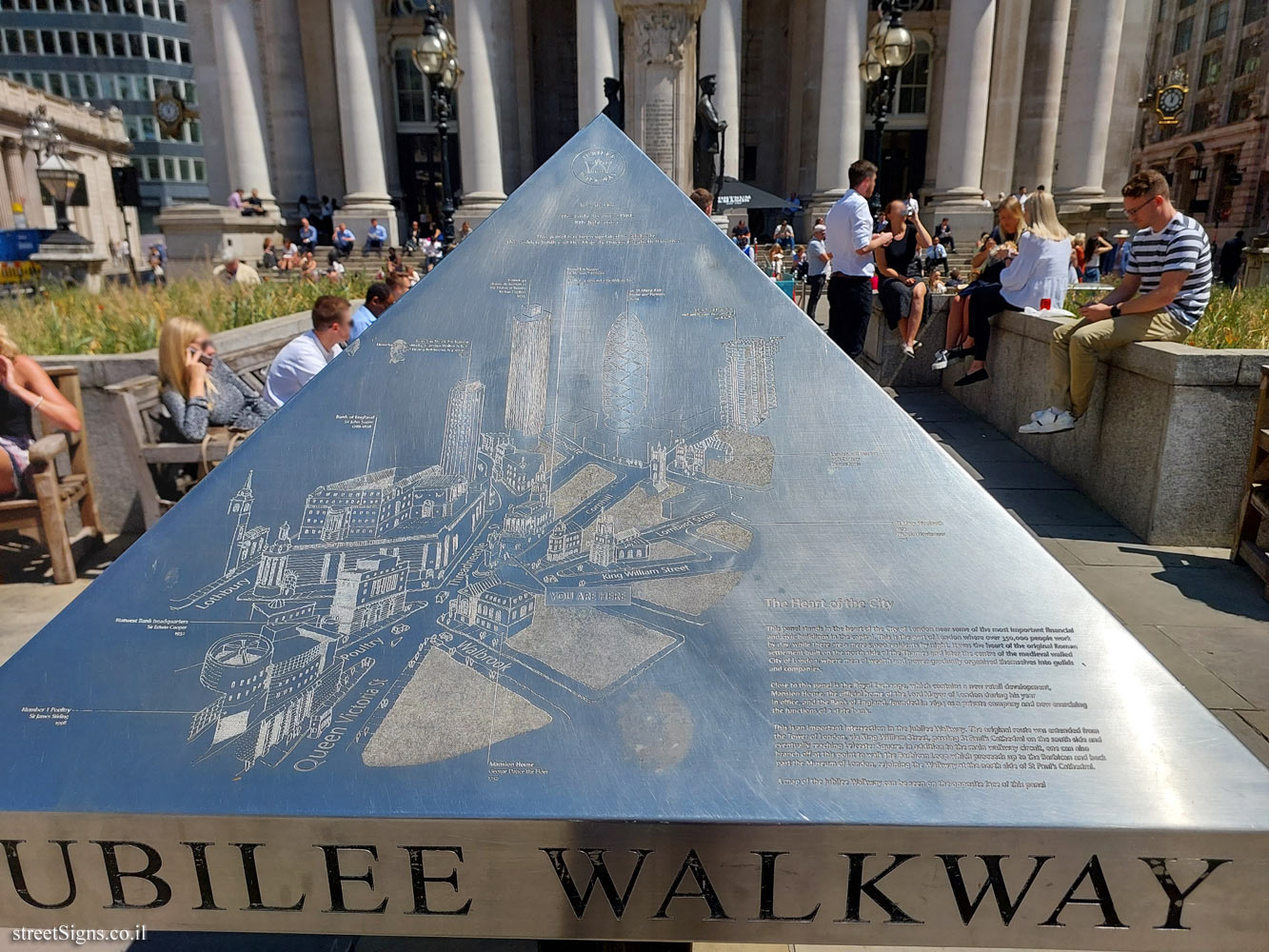 Click for a larger image
Click for a larger image 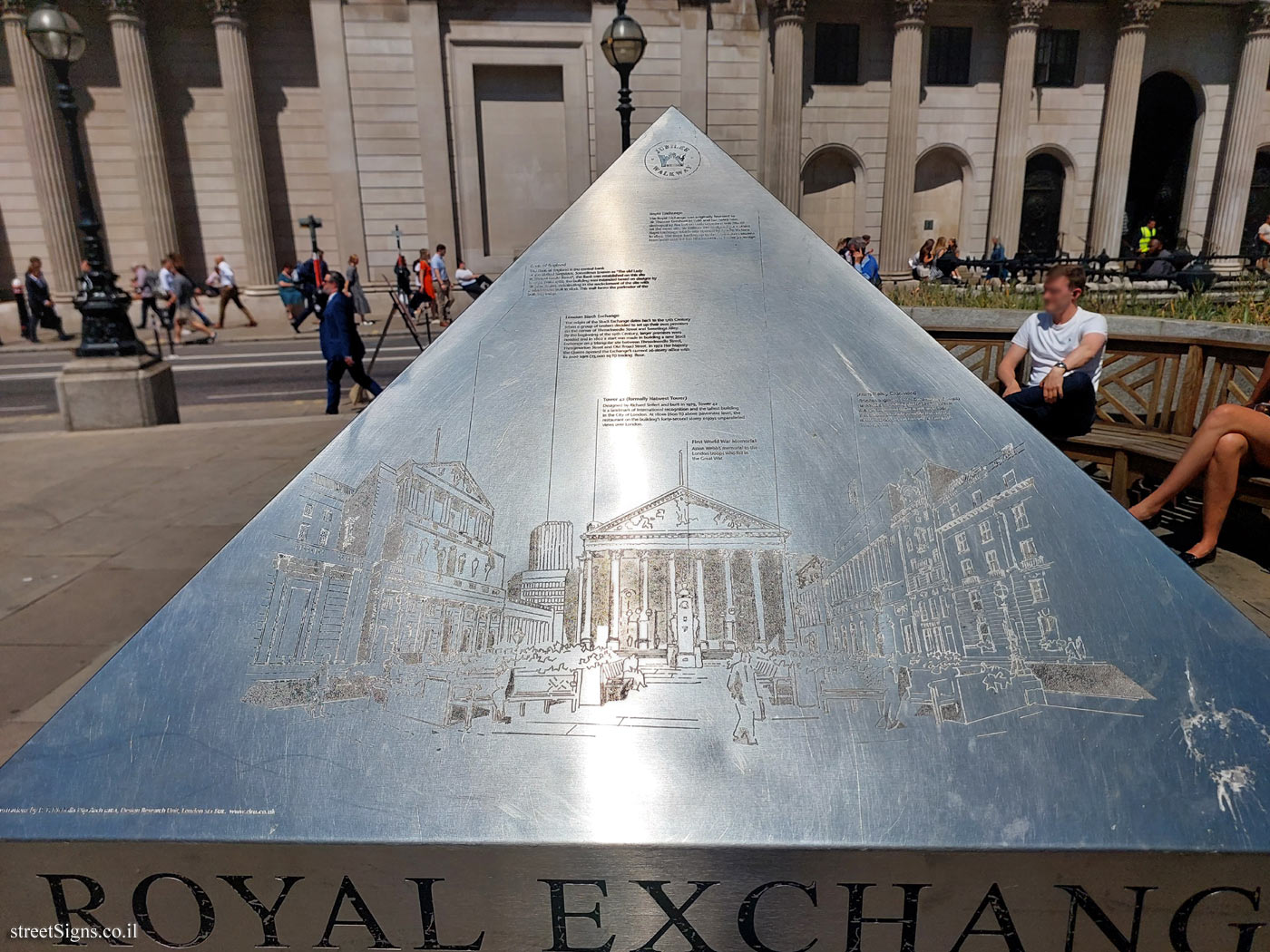 Click for a larger image
Click for a larger image 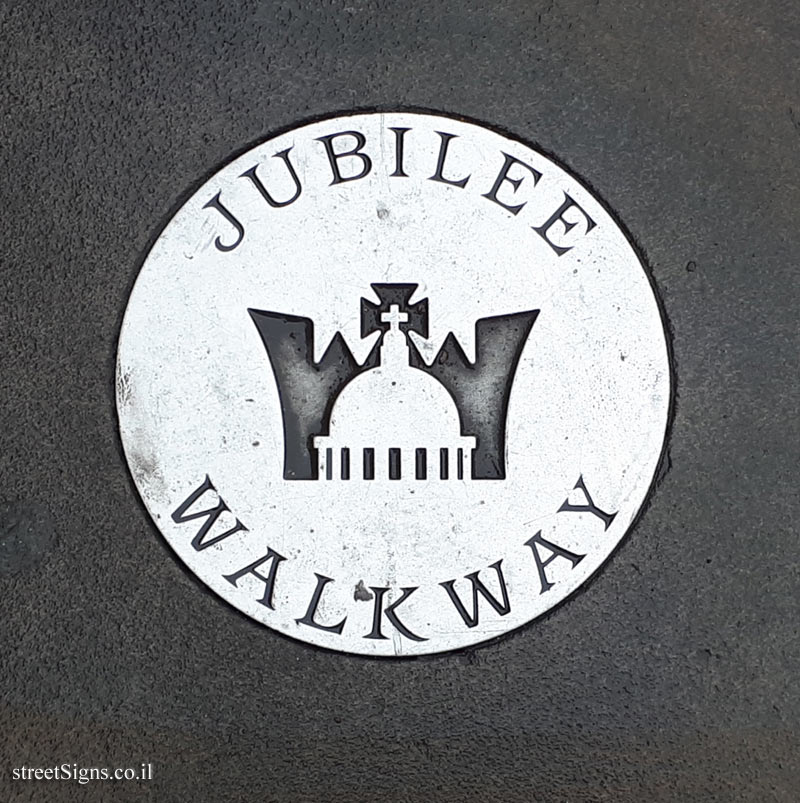 Click for sign's details
Click for sign's details 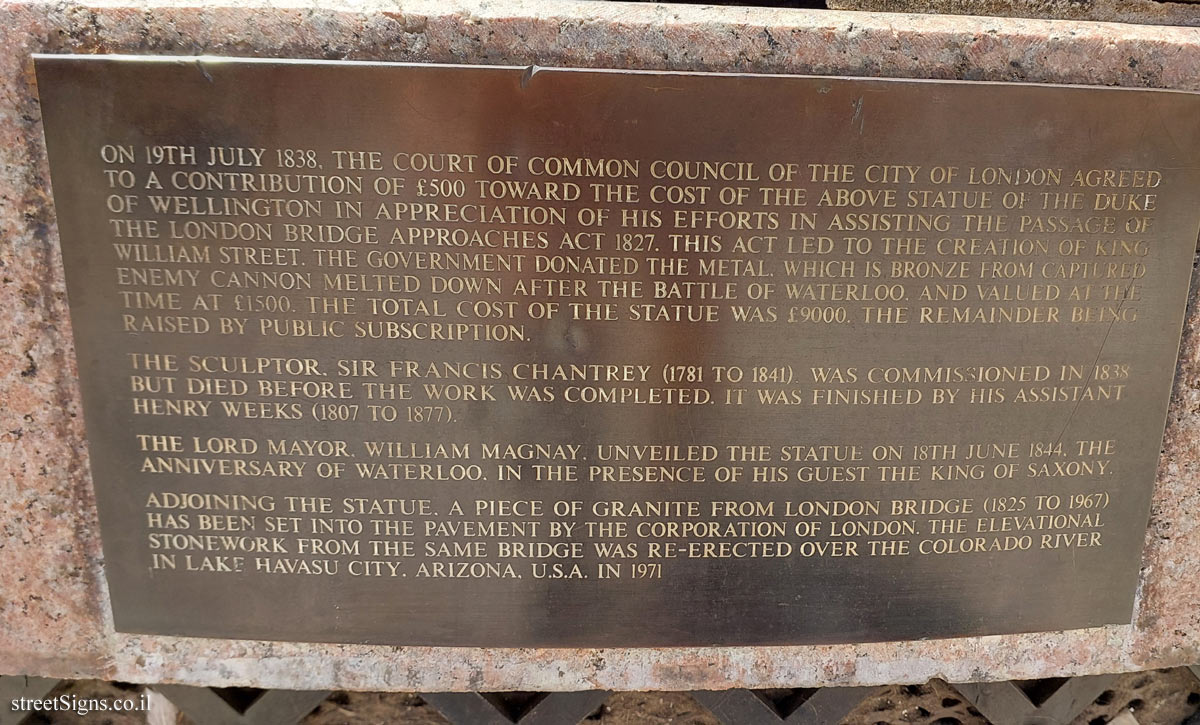 Click for sign's details
Click for sign's details 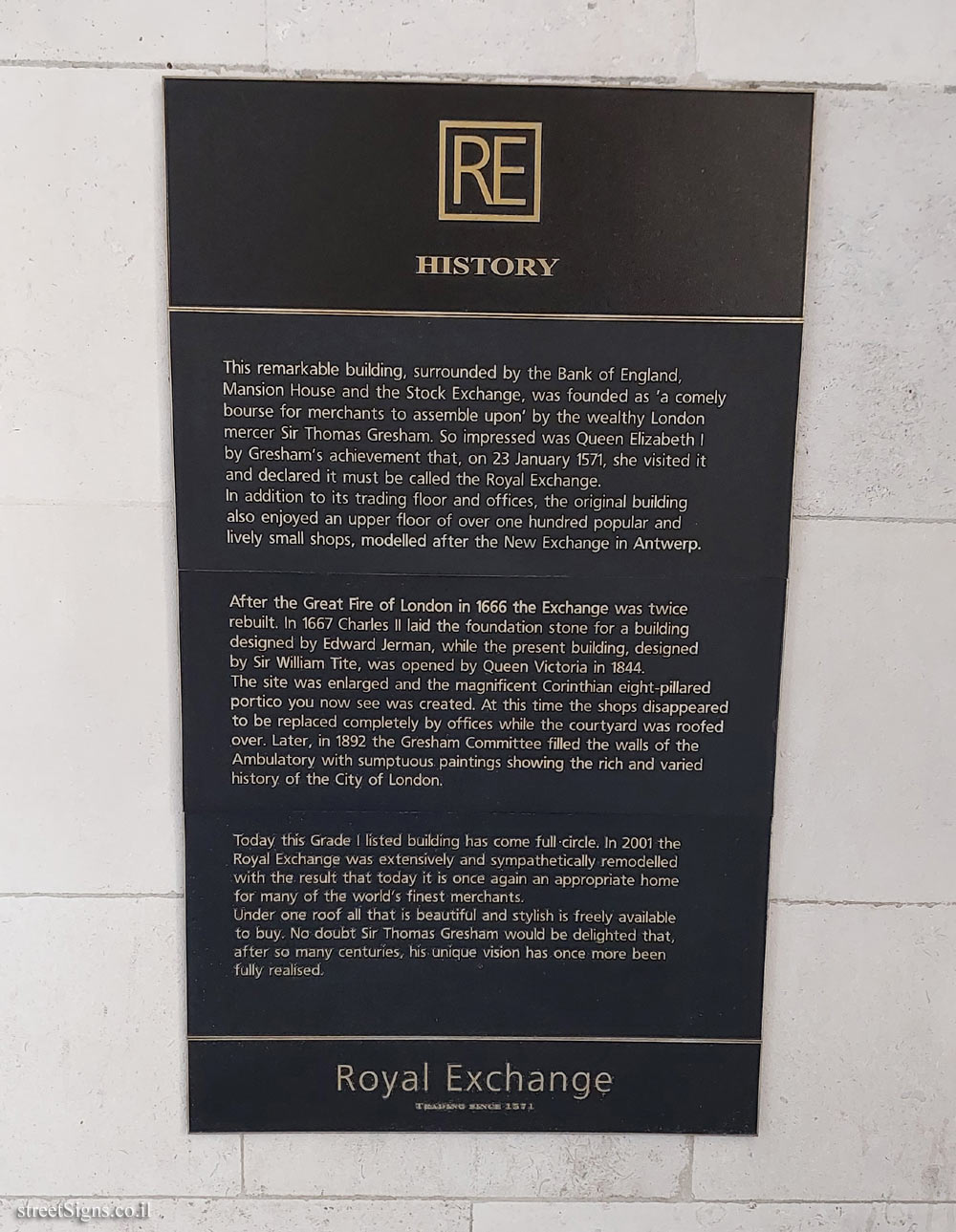 Click for sign's details
Click for sign's details